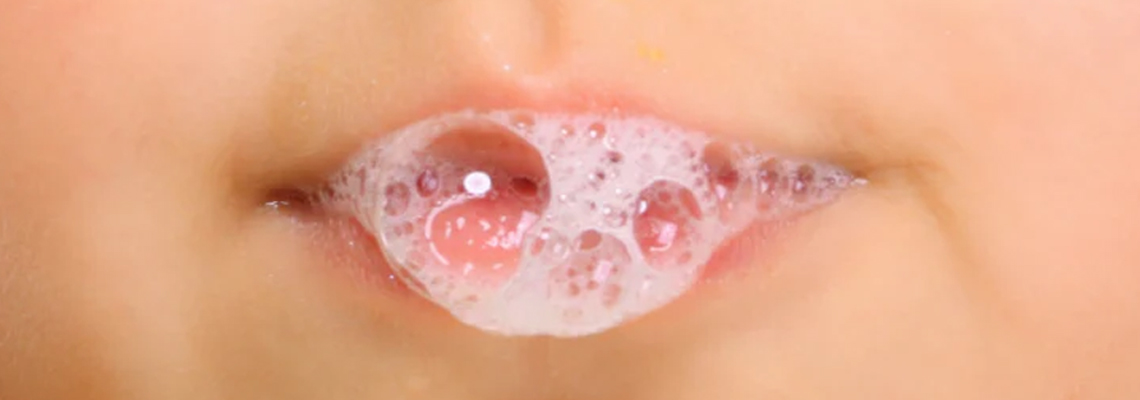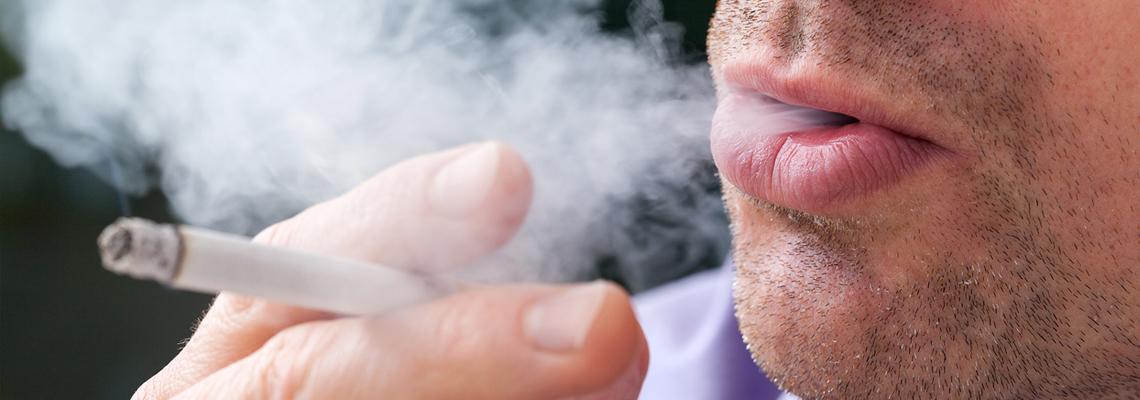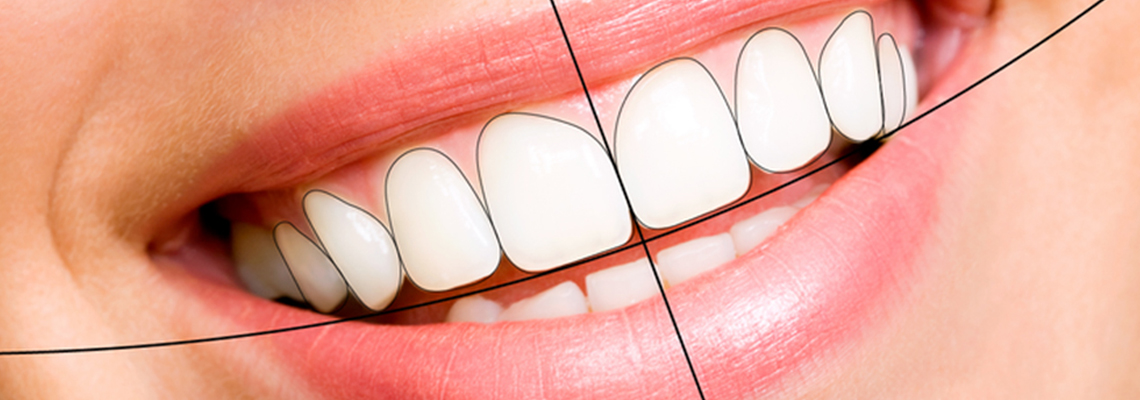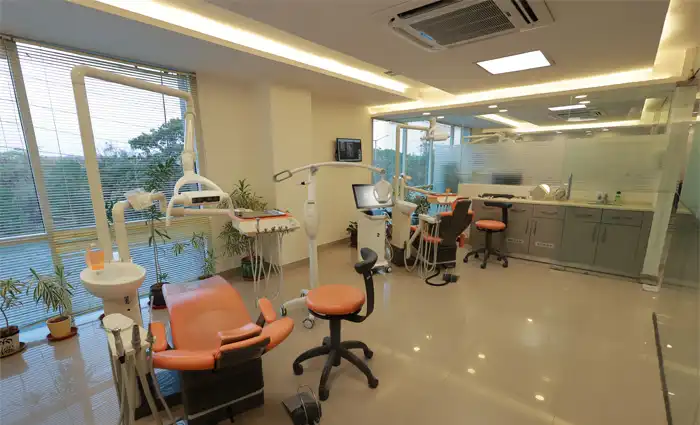To choose the Best Dental Implant System, Dr. Motiwala explains the difference between single-piece dental implants and multi-piece implants or in other words, difference between basal and crestal implants.
Dental implants for replacing missing teeth have become one of the most promising modes of restoring form, function, and aesthetics. There are however different techniques for placing them and the patient must understand the difference between basal and crestal implants. Patients are usually concerned about various questions like:
- What is the best dental implant?
- Which dental implant is best for less bone?
- Which dental implants are the safest?
- Which dental implants are possible in periodontal conditions?
This article would help to give a basic idea on implant and a clearer picture on the two techniques adopted by various dentists, their advantages and disadvantages making it easier to learn the difference between basal and crestal implants.
A brief evolution:
To begin with, titanium was found to be the most biocompatible metal to be placed in the human body without any adverse effects. The use of titanium as an implant material in dentistry was initiated by Branemark, after he successfully used it in human jaws for replacing teeth.
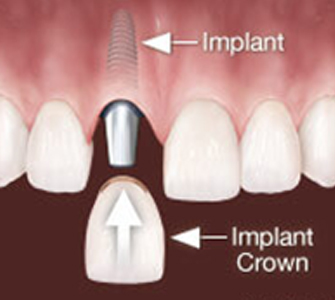
Some of the advantages of Titanium are its bio inertness, resistance to corrosion from bodily fluids, resistance to multiple loads, great capacity of Osseointegration, and high fatigue limit. The history of its use since a very long time proves that titanium is the ideal material to be used as implants.
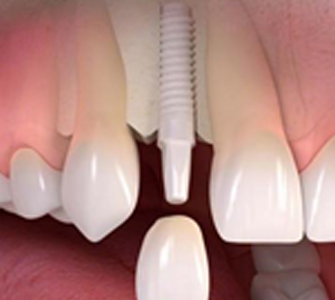 Over the years, a newer metal free material, Zirconia has been introduced as another best material for dental implants. Its property of biocompatibility, high flexural strength and metal free nature is making it as an alternative choice for titanium implants.
Over the years, a newer metal free material, Zirconia has been introduced as another best material for dental implants. Its property of biocompatibility, high flexural strength and metal free nature is making it as an alternative choice for titanium implants.
So which material is better – Zirconia or Titanium?
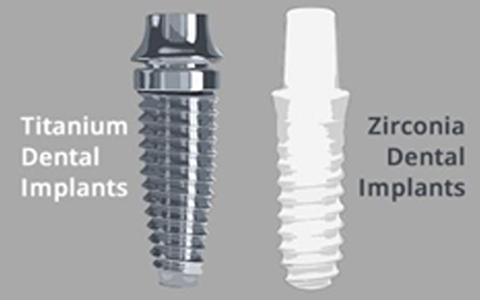 Although Zirconia is a metal free alternative to titanium, it is brittle and has less fracture resistance and flexural strength, making their long-term success questionable. They are also thought to have higher chances of complications and fracture when used as an implant material.
Although Zirconia is a metal free alternative to titanium, it is brittle and has less fracture resistance and flexural strength, making their long-term success questionable. They are also thought to have higher chances of complications and fracture when used as an implant material.
But, these properties of Zirconia – being a metal free material, with high biocompatibility, good fracture resistance and flexural strength, makes it the second best material to be placed in the human body. Therefore it is an ideal material of choice to be used as a crown or bridge over the teeth or implants or both.
The initial titanium implants had a machined surface and was found to take around three months for it to completely fuse with the bone (Osseointegration).
Dental implants failed whenever there was any micro-movement of the implant during the 3 month healing period. To increase the success rate of dental implants, 2 techniques evolved.
- Delayed loading
- Immediate loading
To minimize micro movements of the implants, the basic structure of the implant was split into multiple components. One of which, is placed inside the bone and left under the gum to heal for a period of three months. Following this, another component, an abutment is fixed to the implant with the help of a screw. This abutment is intended to be the part, upon which the final crown is permanently fixed.
The implants used for delayed loading were therefore multi-piece implants, consisting of many components attached to one another.
The research was directed towards shortening the healing period, by enhancing the surface roughness, but it did not alter much of this time period.
Advantages of delayed loading technique:
- Since the implant body is left inside the bone for three months, it Osseo-integrates undisturbed without any micro movements.
- Simple procedure. Can be done easily by everyone and is not dependent on the skill of the dentist.
Disadvantages of delayed loading technique:
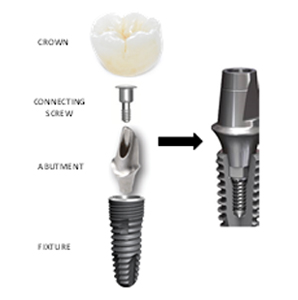
- The implants are made of multiple components to allow better Osseointegration.
- As the implant body is made to be in the bone for three months, the implants are split into multiple units. So when replacing a single tooth, three unit implant system is used – an implant body to be placed in the bone, an abutment attached to the implant body with the help of a screw, and the permanent crown, fixed to the abutment. When replacing a full arch bridge, the implants are modified with additional components, so that they are properly aligned for the bridge to be placed over them. This further increases the number of components of the basic implant structure, compromising the success.
- The implant is placed in the crestal part of the bone and therefore can only be placed in patients with sufficient bone.
- A temporary prosthesis is given during the healing period, which may result in early implant exposure. It also affects the emotional status of the patient as they have to wait for 3 months to get the permanent fixed prosthesis.
- The procedure usually involves gum elevation and in some cases, extensive surgical procedure.
- Patients with insufficient bone may be advised to get additional surgical procedures like bone grafting and/or sinus lifting. These additional surgeries increases the overall duration and cost of the treatment.
- Multiple visits to the dentist, dragging the treatment for several months.
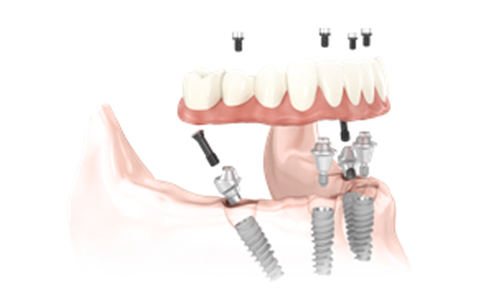
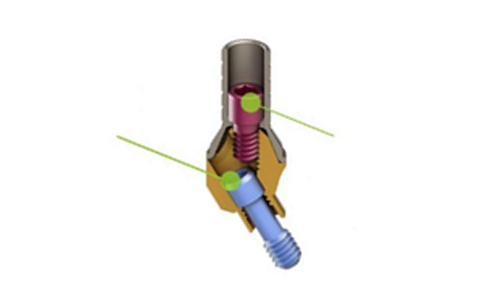
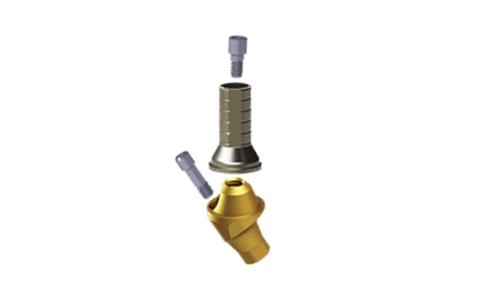
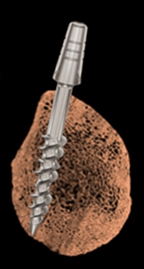 Although delayed loading has been extensively used, there was always a concern of waiting period of three months to get the missing teeth replaced. This led to further exploration on “bone-implant” interaction and ways in which this healing period can be reduced. Orthopedics have been using implants since decades but they never implied on this time required for Osseo integration. A thorough research on this revealed a key factor of engaging the basal cortical bone, which not only minimizes the micro movements of implants but also encourages bone formation when adequate forces are applied. This paved the path to the introduction of “immediate loading” of implants in dentistry.
Although delayed loading has been extensively used, there was always a concern of waiting period of three months to get the missing teeth replaced. This led to further exploration on “bone-implant” interaction and ways in which this healing period can be reduced. Orthopedics have been using implants since decades but they never implied on this time required for Osseo integration. A thorough research on this revealed a key factor of engaging the basal cortical bone, which not only minimizes the micro movements of implants but also encourages bone formation when adequate forces are applied. This paved the path to the introduction of “immediate loading” of implants in dentistry.
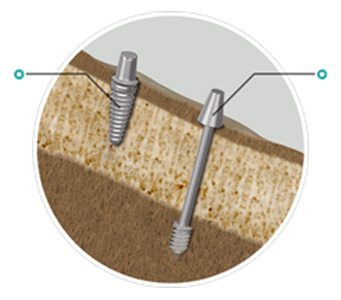
Immediate loading can be done when an implant is placed in the jawbone in such a way that the basal cortical bone is properly engaged. This aids in acquiring much greater primary stability when compared to the traditional crestal implants. The implants are then immediately loaded with a permanent crown. Since the crowns are immediately fixed without the healing period, single piece dental implants are used in this technique.
Advantages of immediate loading technique:
- It allows the use of single piece implants which are the best dental implants.
- The permanent prosthesis is immediately fixed, eliminating the waiting period.
- A great primary stability of the implants as they engage basal cortical bone.
- Can be easily placed even in patients with insufficient bone.
- Eliminates the necessity of additional procedures like bone graft and/or sinus lift.
- The technique is usually simple, as the implants are placed using flapless technique. i.e., they do not involve aggressive surgical procedure.
- Provides emotional benefit for the patient as the teeth are immediately replaced.
Disadvantages of immediate loading technique:
- Procedure mainly depends on the skill of the practitioner.
- If the basal cortical bone is not engaged properly, it leads to failure of the implant.
This diversion in the two concepts of implant techniques led to the variation in the basic design of the implant system:
- Multi component implant
- Single unit implant
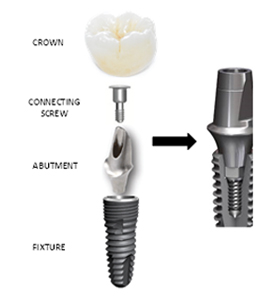 The basic design of this system incorporates around 3-5 separate components, which are attached to one another with the help of small screws.
The basic design of this system incorporates around 3-5 separate components, which are attached to one another with the help of small screws.
Advantages of Multi-unit Implants:
- The implant fixture is placed inside the bone to allow Osseo integration. Hence it helps in eliminating micro movements.
- The different components are thought to be retrievable in case of failure of the implant or crown.
Disadvantages of Multi-unit Implants:
- Multiple components incorporate minute gaps which allow bacterial growth and seepage of oral fluids and food debris leading to consecutive failure of implant.
- Micro movements of the screw-abutment-crown components cause plunger effect, causing the seepage of fluids and debris continuously causing failure.
- Much of the implant structure is hollow, to allow the attachment of the screws. This compromises the strength of the implant and may result in fracture when excessive or improper loads due to tilting of implant are applied.
- The neck of the implant is often made rough as it helps in anchoring the upper cortical bone. But as a result of gum recession, this highly rough surface accumulates a lot of food debris leading to bacterial growth and implant failure.
- The diameter of the implant is large which makes it a most suitable niche for bacterial growth.
- The screws may loosen and require multiple visits to the dentist even after the completion of the treatment.
- Additional components are to be incorporated in cases where the angulations of the implant must be altered to allow proper seating of the crowns or bridges.
- The surface of these implants is usually made rough to allow better Osseo integration. Although it has an advantage of creating a better bone-implant interface, in cases of peri implantitis, the micro gaps on the surface makes it impossible to completely eliminate the lesion and therefore leads to its apparent failure.
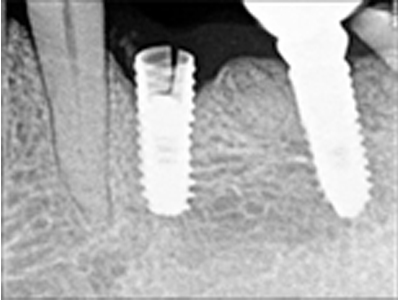
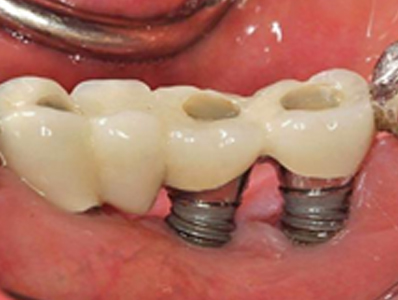
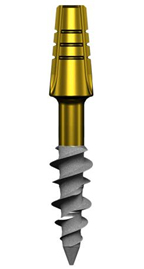 A single piece implant comprises of a single component, with self-incorporating abutment. They are placed in a single step and do not have additional components.
A single piece implant comprises of a single component, with self-incorporating abutment. They are placed in a single step and do not have additional components.
Advantages of Single piece Implants:
- No multiple components hence are devoid of micro gaps.
- The body of the implant is solid and is stronger, as it does not have to have space for accommodating screws.
- They comprise of a long thin neck. ( reduces the seepage of bacteria and plaque beneath the gums)
- Permanent crown can immediately placed without any additional attachments.
- Long Polished neck reduces the chance of peri implantitis and implant failure in cases of gum recession.
Disadvantages of Single piece Implants:
- Technique sensitive
A brief comparison between the two techniques would suggest that, multi piece crestal implants incorporating delayed technique is the most popular technique, used by a greater percentage of the dentists all around the world. But it is the basic, and traditional technique with many disadvantages over the much-advanced system of basal implants, utilizing immediate loading technique. A great anchorage of the implant in the basal bone, with Osseo integration along rest of the implant surface provides exceptional implant stability. It also avoids additional surgeries, and can easily be placed in patients with inadequate bone.
| Type of crown | Composition | Strength | Aesthetics | Longevity | Amount of tooth to be removed | Biocompatibility |
| Metal | Gold Stainless steel | High | Unesthetic | Great | Less | Metal allergies can be seen |
| Porcelain fused to Base metal | Ceramic + Chromium/Nickle/beryllium/cobalt | High | Unesthetic | Ceramic layer chips off | More (0.5mm for metal +1.5mm for ceramic) | Metal allergies can be seen |
| Porcelain fused to noble metal | Ceramic + Gold/platinum/palladium | High | Unesthetic | Ceramic layer chips off | More (0.5mm for metal +1.5mm for ceramic) | Metal allergies can be seen |
| Resin | Polymethylmethacrylate | Very less | Good | Poor | More | Allergic reactions are rare |
| Emax | Lithium disilicate | High | Aesthetic | Good | More | Biocompatible |
| Zirconia layered | Zirconium dioxide +Yittrium oxide +Ceramic | High | Highly Aesthetic | Great | Less (as less as 1mm is enough) | Biocompatible |
| Zirconia monolith | Zirconium dioxide +Yittrium oxide | Very high | Aesthetic | Great | Less (as less as 0.5mm is enough) | Biocompatible |
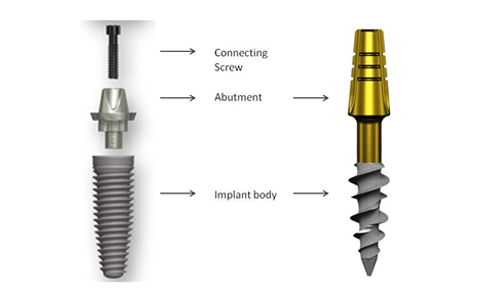 Lets go deeper in our quest to understand the difference between basal and crestal implants. Multi-piece implants are the most commonly used implant system. They are being used for both delayed loading and immediate loading of implants. Their multiple components however comprise of many tiny gaps making it more susceptible to bacterial and plaque accumulation. The hollow neck made to accommodate screws, compromises the strength of the implant.
Lets go deeper in our quest to understand the difference between basal and crestal implants. Multi-piece implants are the most commonly used implant system. They are being used for both delayed loading and immediate loading of implants. Their multiple components however comprise of many tiny gaps making it more susceptible to bacterial and plaque accumulation. The hollow neck made to accommodate screws, compromises the strength of the implant.
Single piece implants are the advanced implant systems, which primarily targets elimination of multiple components and minute gaps between them. The implants are solid without compromising the strength of the implant, as they do not have to accommodate any additional screws or other components. Their solid, thin, long, polished neck reduces bacterial and plaque accumulation at a significant rate.
Single piece implants are ideally indicated in immediate loading of basal implants. Utilizing this concept, multi-unit implants are also being used to engage the basal bone and immediately loaded with crown. But this still has a major drawback of the presence of micro gaps between the multiple components, which favor bacterial and plaque accumulation and an increased failure rate in the long run.
Also, single piece implants are manufactured with a primary motive of engaging basal cortical bone. So they have aggressive threads at the tip to engage the basal cortical bone. Multi-unit implants are manufactured with a primary goal of better Osseo-integration and hence have blunt and less aggressive threads making it ineffective to engage basal bone.
Basal implants anchor the basal bone, which has less metabolic rate and therefore resorption and deposition of bone occurs at a rather slower rate when compared to the spongious bone. Hence after these implants are anchored into the basal bone and adequate load is provided, it rather enhances bone formation than resorption. Although the rest of the implants undergo complete fusion after 3 months, the implants success rate is determined by its fixation in the basal bone and not on Osseo-integration (healing period, as required in crestal implants).
| ZIRCONIA CROWN | PORCELAIN FUSED TO METAL (PFM) CROWN |
| Exceptionally high strength | Less strength |
| Less tooth reduction | More tooth reduction |
| Does not fracture | Fractures and chips off easily |
| Highly esthetic | Not so esthetic |
| Not allergic | Can be allergic |
| Minimum thickness of 0.5mm is sufficient | Needs a minimum thickness of 1.5-2mm |
| Can be given in any patient | Not recommended in patients with bruxism |
| No gum discoloration | Gum Tattoo |
| Corrosion free | Metals corrode over time |
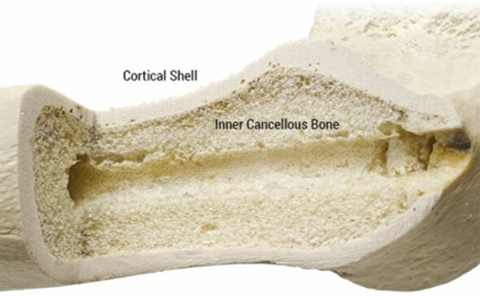
| Best crown for anterior tooth or implant | Layered zirconia crown | 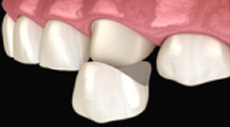 |
| Best crown for posterior tooth or implant | Monolithic zirconia | 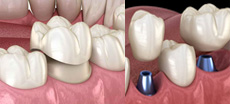 |
| Best bridge for full arch implant | Nexxzr bridge | 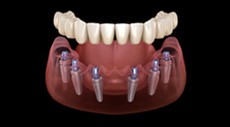 |
| PORCELAIN FUSED TO METAL (PFM) | LAYERED ZIRCONIA | MONOLITHIC ZORCONIA |
| Ideal for anterior teeth | Ideal for posterior teeth | |
| Chipping of porcelain is seen over time | Ceramic layering is less likely to chip as the chewing forces are less in the front teeth | No chipping or fracture |
| Abrade opposing natural teeth | Does not affect the opposing natural tooth | Does not affect opposing natural tooth |
| Good strength | High esthetics | High strength |
| Metal Exposure makes it unesthetic | Great esthetics - mimicking natural tooth | Tooth colored |
| Gum tattoo is seen | No gum tattoo | No gum Tattoo |
| More tooth reduction for metal and porcelain layers | Less tooth reduction | Less tooth reduction |
Hope this article helped you understand the basic difference between basal and crestal implants. The success of basal implants mainly depends on the skill of the practitioner. Proper anchorage into the basal bone is the key of their success. If the implant does not anchor the basal bone and is immediately loaded with a crown; it leads to failure of the implant. Hence a thorough knowledge on the anatomy of the jaw bones, their surrounding structures, and clinical expertise is needed in following this technique.
Around 80% of the dental practitioners in the present day are either graduates or those who have done courses for few months with little clinical experience in placing implants. An oral and maxillofacial surgeon has a better knowledge on the complete anatomy of the facial bones as they encounter most of the maxillofacial traumatic cases and would have placed many implants in this region. Therefore only few dental practitioners are incorporating this technique in their general practice.







